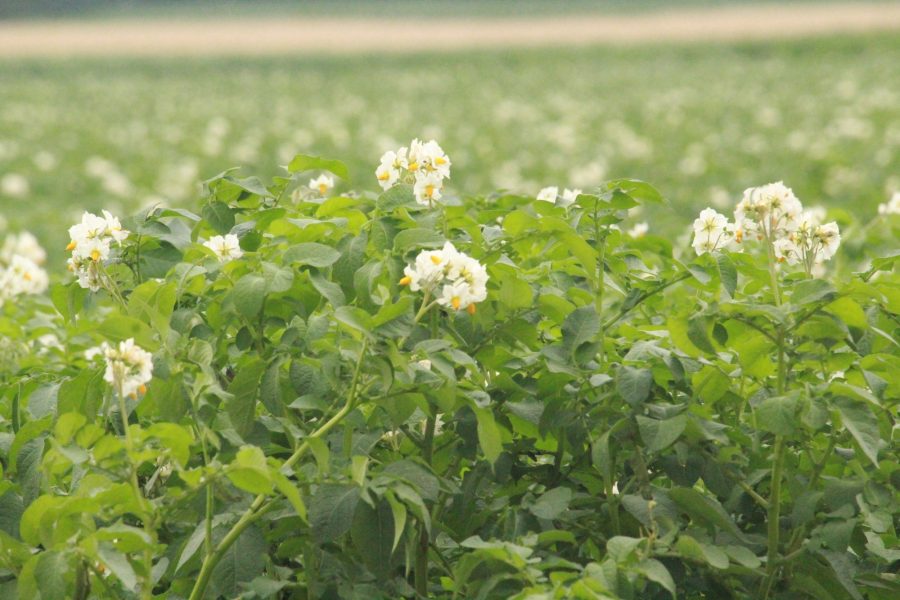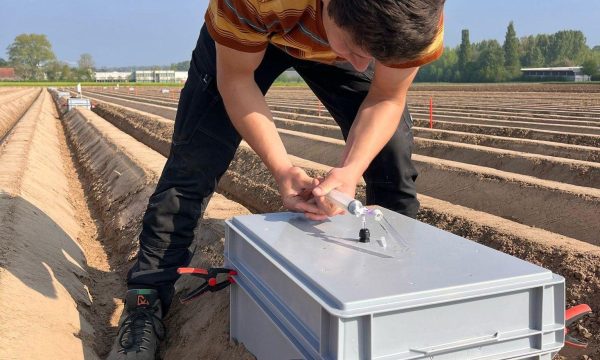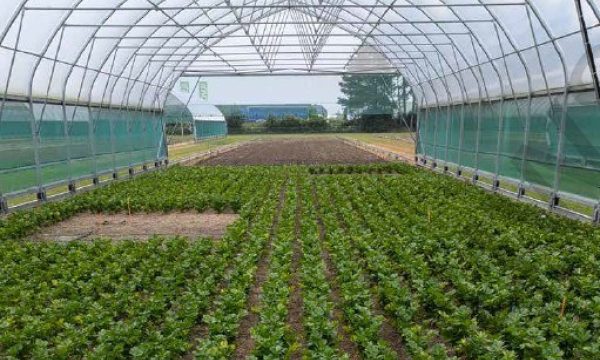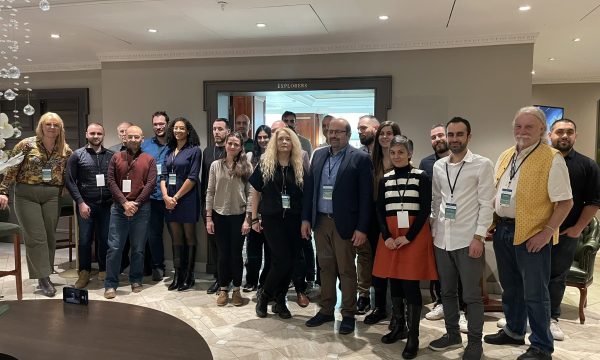Press release Multiple potential pest susceptibility genes modified simultaneously in potatoes with CRISPR-Cas technique

For the first time, researchers have succeeded in simultaneously modifying multiple genes that potentially predispose potato plants to the dreaded fungus Phytophthora infestans. PhD student Ania Lukasiewicz (ILVO-VIB) used the 'new breeding technique' CRISPR-Cas for this purpose. Whether the genes are effectively turned off and the new potato plants are effectively resistant to the pest needs further testing. But for the development of a new generation of long-term resistant potato varieties, this scientific breakthrough is already a first step.
The European Parliament last week gave the go-ahead to exclude plants obtained with certain new breeding techniques (called NBTs) such as CRISPR-Cas from Europe's very strict GMO legislation. The bill they voted on distinguishes two different categories and two types of rules for NBT plants (NBT 1 and NBT 2). NBT 1 plants including plants obtained with certain CRISPR-Cas techniques are considered as safe ("equivalent") to traditional plants by the European food safety agency EFSA and therefore exempt from the requirements of GMO legislation. The bill has yet to be submitted for a vote by member states in the European Council.
Potato blight
The fungus Phytophthora infestans is responsible for the potato blight that caused the great famine in Ireland in the mid-19th century. Also in Flanders, the fungus still causes major losses in the potato sector. The total annual loss in Europe is around 1 billion euros.
Potato fields are treated preventively with plant protection products to control the pest. This increases the risk of the formation of new resistant fungal variants and puts pressure on the environment. Therefore, scientists are looking for other solutions. Developing potato varieties resistant to the fungus is one such solution path.
Wild potatoes x commercial varieties
The classic way to make resistant varieties is through breeding, or in other words the targeted crossing of mother and father plants with interesting characteristics and the selection of crosses in which those characteristics recur. In this way, resistance genes from wild potato varieties are gradually crossed into existing commercial varieties. To obtain a stable resistance that is not easily broken in the field, it is necessary to cross several resistance genes together. With potato, the breeding process can take up to 50 years.
Targeted cut in DNA
To accelerate this process, New breeding technology is used to generate so-called "prebreeding" material that is then crossed into conventional breeding. In the form of CRISPR-Cas relevant here, no foreign DNA is inserted but the plant's own genes responsible for certain traits are 'cut' in a very targeted manner. Knocking out so-called disease susceptibility genes in potato in this way would be a good alternative strategy to introduce improved resistance in potato varieties against, for example, blight. Susceptibility genes are used by the pathogenic fungus to infect the plant, multiply itself in the plant and spread itself.
Revolutionary: multiple genes cut in one pass
Doctoral researcher Ania Lukasiewicz (ILVO/VIB) succeeded in mutating several of these suspected susceptibility genes simultaneously. The same process had previously been successfully used for a single susceptibility gene in potato, with proven increased resistance in the field. But never before has it been successfully done for several of those genes at the same time, which is just as interesting for long-term protection against the pest. Knocking out multiple genes at once increases the plant's defense mechanism to suppress or even prevent an infestation altogether.
Ania Lukasiewicz: "In my research, I took advantage of the high similarity between susceptibility genes in different plant species. We were able to identify a total of 87 genes in the potato genome that we strongly suspect to be susceptibility genes. Within this set of genes, we then made a selection and several of these we were able to successfully modify using the CRISPR-Cas technique."
Whether Lukasiewicz's new potatoes are and remain effectively resistant to the dreaded fungus remains to be investigated further.
CRISPRed plants as NBT 1 plants.
In nature, genes are usually turned off because random abnormalities occur in the DNA of that gene under the influence of UV rays, for example. This means that the sequence - the order of the letters of the DNA - changes slightly. This can result in the protein that is normally made in the plant cell based on this gene no longer being the same and thus no longer working. In that case, we say the gene is "turned off".
With CRISPR-Cas, changes are not made randomly but at very specific places in the DNA. The plant responds with the same repair mechanism. Because the resulting plant could also occur spontaneously in nature, this technique falls under the proposed NGT 1 category in the European bill.
Doctoral work
Ania Lukasiewicz defended her PhD "Building resistance: multiplex CRISPR/Cas editing in potato" on Nov. 23 at the Technologiepark in Zwijnaarde. Supervisors were Dr. Tom Jacobs (VIB/UGent), Prof. Dr. Frank Van Breusegem (VIB/UGent), Dr. ir. Tom Eeckhaut (ILVO) and Prof. Dr. Tom Ruttink (ILVO/UGent). Ania Lukasiewicz is now employed at Wageningen University.
Contact
Ania Lukasiewicz, researcher: ania.lukasiewicz@wur.nl


